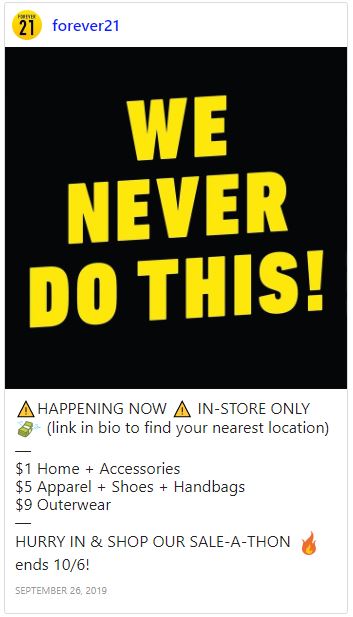💰Retail Roundup (Short Mall Traffic; Long Discounting)💰
Ah, the fourth quarter. The fourth quarter is critical for retailers as they play out the “holidays” option and hope to stave off bankruptcy. How’s that working out for them?
U.S. retail sales increased less than expected in November as Americans cut back on discretionary spending, which could see economists dialing back economic growth forecasts for the fourth quarter.
The Commerce Department said on Friday retail sales rose 0.2% last month.
Surveys had predicted a 0.5% retail sales acceleration.
Excluding automobiles, gasoline, building materials and food services, retail sales edged up 0.1% last month after rising by an unrevised 0.3% in October.
The so-called core retail sales correspond most closely with the consumer spending component of gross domestic product. Consumer spending, which accounts for more than two-thirds of U.S. economic activity, grew at a 2.9% annualized rate in the third quarter.
The breakdown is as follows:
Auto sales ⬆️ 0.5%;
Gasoline ⬆️ 0.7%;
Online/Mail-Order Retail ⬆️ 0.8%;
Electronics/Appliances ⬆️ 0.7%; and
Furniture ⬆️ 0.1%.
On the negative side, however:
Apparel ⬇️ 0.6%;
Restaurants/Bars ⬇️ 0.3%; and
Hobby/Music/Book Stores ⬇️ 0.5%.
It gets worse for apparel. The Bureau of Labor Statistics’ latest CPI report revealed weakness for November — which, significantly, includes Black Friday and Cyber Monday. 😬
Men’s and women’s apparel decreased by 0.9% and 3.6% YOY, respectively, while boys’ and girls’ apparel decreased 3.9% and 2.2%. Said another way, there’s an epidemic of markdowns/discounts. That can’t bode well for retail’s bottom line.
Indeed, several retailers acknowledged that markdowns are a significant issue. American Eagle Outfitters Inc. ($AEO) CEO Jay Schottenstein* noted “the challenging environment promotional activity increased relative to our expectations,” a theme that was reiterated by management teams at Urban Outfitters ($URBN), Francesca’s ($FRAN), Children’s Place ($PLCE) and Designer Brands ($DBI). Gamestop Corp’s ($GME) CEO George Sherman — while reporting dogsh*t numbers — noted:
“At this stage, we've entered the commoditization phase of the console cycle, where promotional pricing is driving sales. And if you're out shopping or doing store checks over Black Friday or Cyber Monday you likely saw a clear example of [those] discount stands.”
The problem is that retailers need to draw foot traffic and when your retail experience is commoditized and your product sucks sh*t, how do you do that?
TO READ THE REST OF THIS KICK@$$ ARTICLE, CLICK HERE AND SUBSCRIBE (AND GET SO MUCH MORE, DISRUPT THE COMPETITION, WITH PETITION)






















